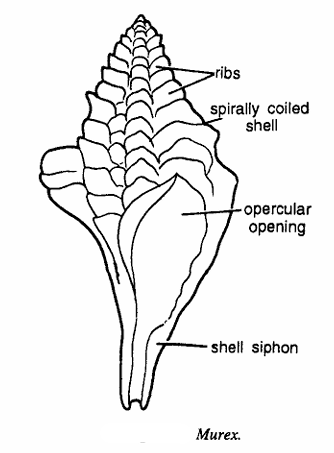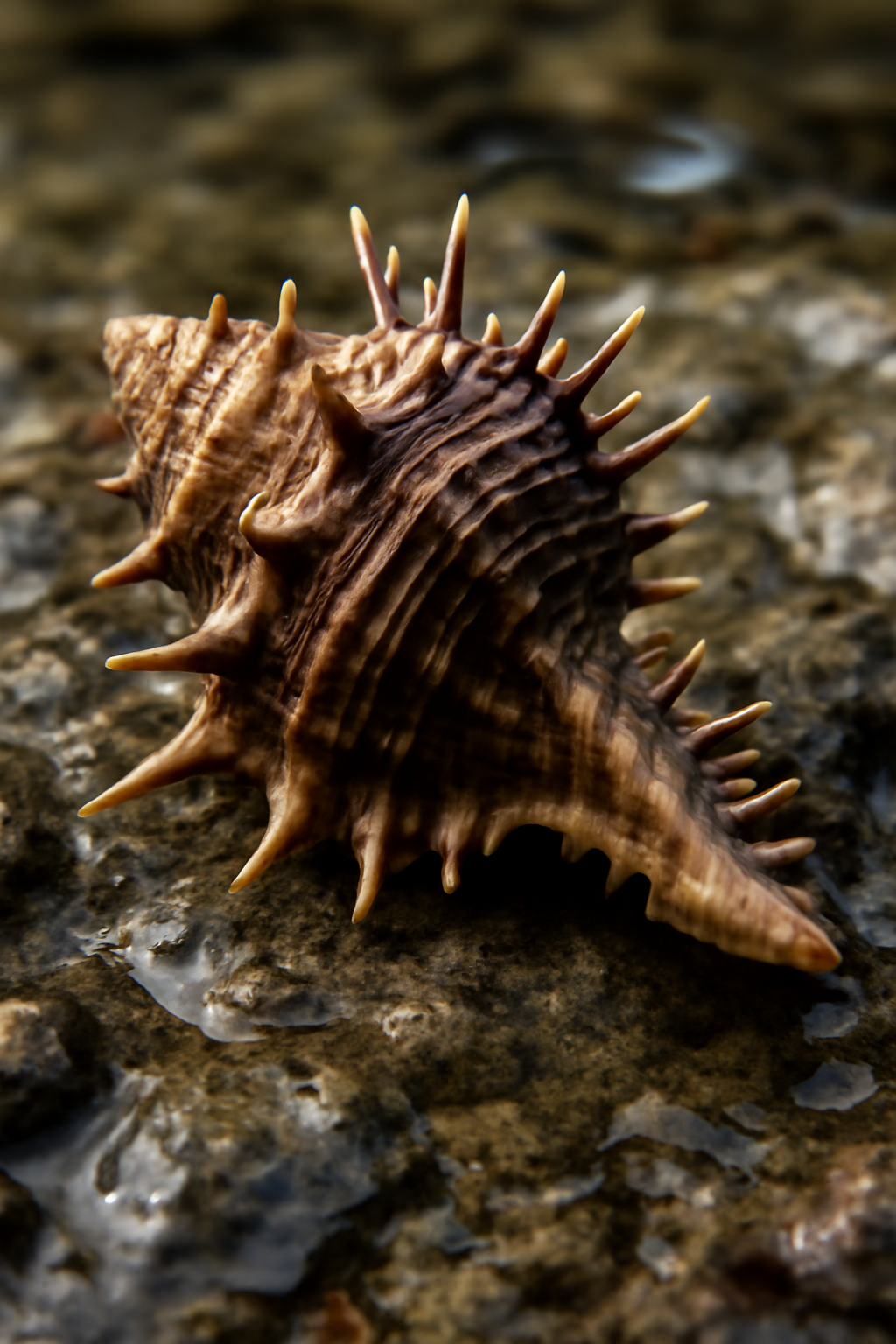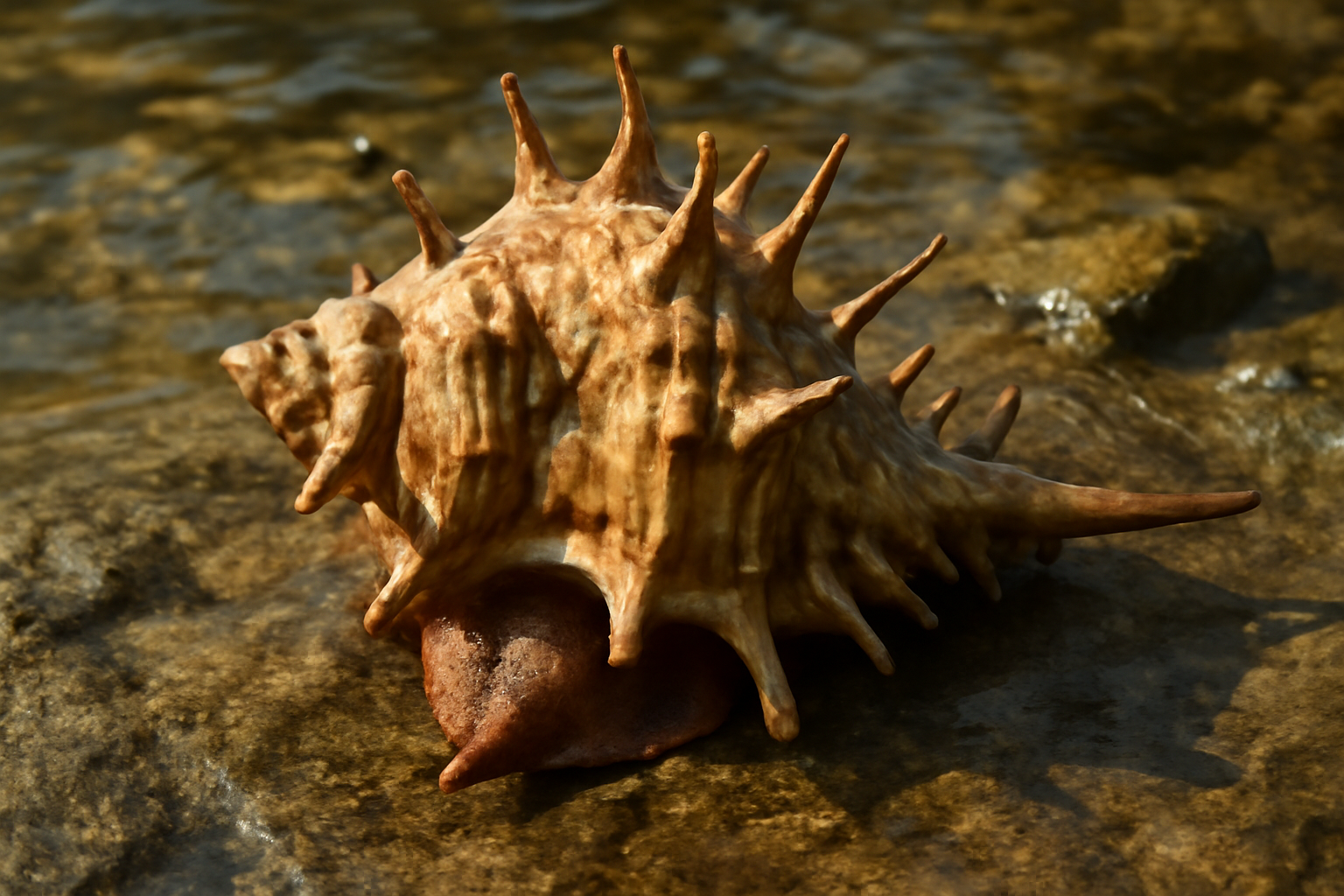Murex angulifer: Morphology, Classification, Habitat, and Ecological Role of the Spiny Rock Snail
Murex angulifer is a species of predatory sea snail belonging to the family Muricidae, commonly known as rock snails or murex snails. Recognized for their robust, spiny shells and ornate appearance, Murex species have fascinated collectors and biologists alike. The species occupies rocky intertidal and subtidal zones in marine environments where they play a role as predators on other invertebrates. Their shells often feature pronounced varices and spines which provide protection from predators and mechanical damage.
Classification of Murex angulifer
| Taxonomic Rank | Name | Characteristics |
|---|---|---|
| Kingdom | Animalia | Multicellular eukaryotic organisms |
| Phylum | Mollusca | Soft-bodied marine animals with shells |
| Class | Gastropoda | Snails and slugs with varied coiling of shells |
| Subclass | Caenogastropoda | Marine and freshwater snails with advanced features |
| Order | Neogastropoda | Predatory sea snails with siphons |
| Family | Muricidae | Rock snails with spiny, robust, and often ornate shells |
| Genus | Murex | Large spiny shells with elongated siphonal canals |
| Species | Murex angulifer | Spiny predatory sea snail with sharp varices and ridges |

Habit and Habitat
Murex angulifer inhabits rocky coastal environments, largely in intertidal and shallow subtidal zones, often hiding in crevices and under rocks. These snails are carnivorous, feeding on bivalves, barnacles, and other mollusks. They use their radula and acidic secretions to bore into prey shells.
The species prefers areas with ample hiding spots and high biodiversity, facilitating predator-prey interactions. The structural complexity of their habitat protects them from wave action and predators.
Geographical Distribution
Murex angulifer is predominantly found in tropical and subtropical Indo-Pacific marine waters. The precise distribution varies, but the species typically occupies coastal regions from eastern Africa to Southeast Asia and northern Australia. Their presence is commonly recorded in coral reef ecosystems and rocky shorelines.
General Characteristics of Murex angulifer
- Shell is spirally coiled, dextral with a long and prominent spine bearing 3 or more rows of prominent protuberances or spines forming ribs.
- Aperture round, ending below in a long canal.
- Peristome is produced into a long, spout-like prolongation known as the shell siphon which leads into the mantle cavity.
- Head is prolonged anteriorly into a long proboscis, which can be retracted within a proboscis sheath.
- Foot is large and tough, having flat creeping sole. Shell is spirally twisted with an operculum.
- Sexes are separate. The male has proje( ting muscular penis. The visceral hump is spirally coiled.
- Eyes are placed at the base of the tentacles.
- Salivary glands and liver contain proteolytic enzymes. Heart has one auricle and kidney is also one.
- Nervous system is highly concentrated.
- Shell: Robust, heavy, adorned with spines or sharp varices, and often elongated with a well-developed siphonal canal.
- Color: Shell coloration varies but is generally muted earth tones with occasional banding.
- Size: Shells range from moderate to large, typically 5 to 15 cm in length.
- Radula: Specialized for drilling and feeding on shelled prey.
- Locomotion: Uses a strong foot for crawling on rocky substrates.
- Sensory Organs: Tentacles and eyes on stalks near the head.

Special Features
- Defensive Spines: Protect against predation and provide camouflage among rocks.
- Siphonal Canal: Facilitates water flow to gills and detection of prey-related chemicals in water.
- Predatory Adaptations: Acid secretions combined with radular drilling enable effective predation.
- Reproduction: Egg capsules are deposited in protected areas; larvae are planktonic.
- Ecological Role: Controls populations of bivalves and other invertebrates, maintaining community balance.
Identification
Identification involves:
- Examination of shell spines, ridges, and varices.
- Shell size and shape comparisons.
- Color patterns and surface texture.
- Radula and soft body morphology in some cases.
- Geographic location and habitat specifics.
Life Cycle and Reproduction
Murex angulifer follows a reproductive cycle typical of muricids, with external fertilization and planktonic larval stages. Egg capsules are attached to hard substrates, within which embryos develop. Upon hatching, free-swimming larvae disperse before settling and metamorphosing into juveniles.
Growth rates depend on environmental conditions, with robust shells forming over several years. The species’ lifespan is estimated at several years under favorable conditions.

Ecological Role and Importance
- Predation: Regulates populations of bivalves and barnacles, influencing reef and rocky shore community structure.
- Prey: Serves as food for larger predatory fish, octopuses, and crabs.
- Shells: Collected by humans for ornamental purposes.
- Indicator Species: Reflects ecosystem health in rocky coastal environments.
- Biodiversity Contribution: Maintains predator-prey balances critical to marine ecosystem function.
References
- https://en.wikipedia.org/wiki/Murex
- https://uk.inaturalist.org/taxa/50766-Muricidae
- https://www.thesandiegoshellclub.com/uploads/1/3/8/1/138179831/gra-tes_murex_article.pdf
- https://www.britannica.com/animal/murex-mollusk-family
- https://en.wikipedia.org/wiki/Murex_trapa
- https://www.fao.org/4/y4160e/y4160e09.pdf
- https://handwiki.org/wiki/Biology:Murex
- https://www.sealifebase.se/summary/Murex-tribulus.html
